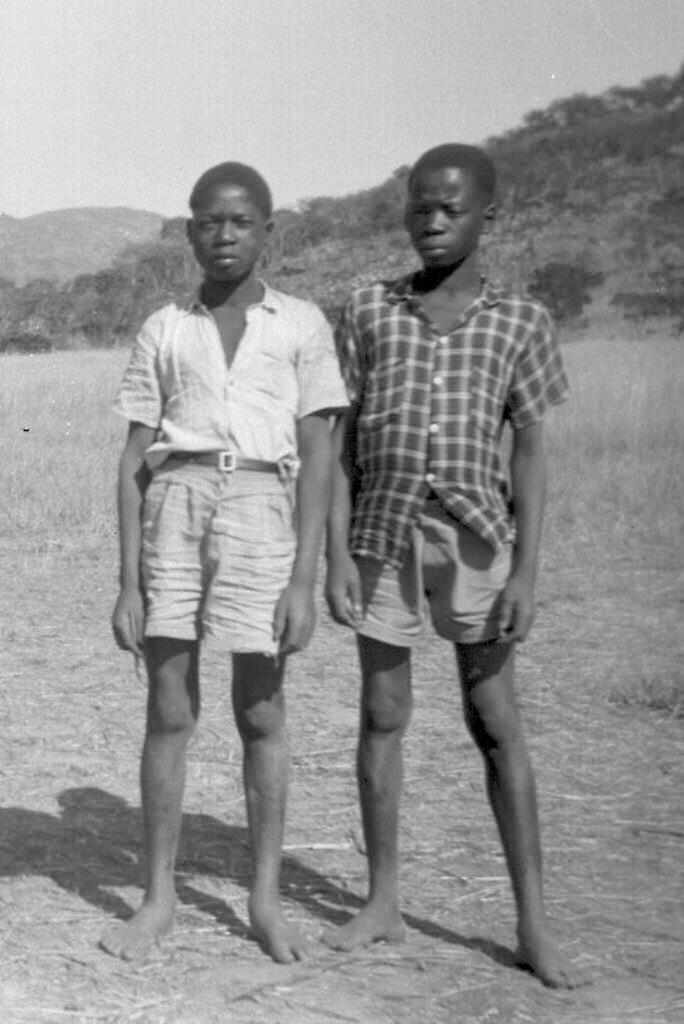
Figure 1.--This photo shows two schoolboys in Tanganyika during the 1950s which was the last decade of the British colonia era. |

|
Tanzania is the union of Zanzibar and Tanganika. Zanzibar was an Arab emirate which for centuries was a key port in the Arab Indian Ocean slave trade. The emirs were pressured by the British during the 19th century end the Indian Ocean slave trade. Zanzibar became a British protectorate (1890), but Britain while suppressing the slave trade did not intervene substantially in domestic matters like education. Tanganika was a German colony sized by the British during World War I (1914-18). After riots on Zanzibar following independence (1963), the island was united with Tanzania (1964). The Arab emirs and the German colonial authorities gave little attention to education. The foundation for the modern Tanzanian education system is the schools set up during the British colonia era. The education system today. Two ministries share responsibility: 1) Ministry of Education and Culture and Higher Education and the the Ministry of Regional Administration and Local Government. The Tanzanian school system includes the basic primary, secondary, and tertiary leves. The schools offer 2 years of pre-primary education, 7 years of primary education, 4 years of Junior Secondary (ordinary Level), 2 years of Senior Secondary (Advanced Level) and up to 3 or more years of Tertiary Education. There is also an adult education program. An important feature of Tanzania’s education system is the bilingual policy, which requires children to learn both Kiswahili and English. The Government initiated an important educational reform program (1995) which is still in progress.
Tanzania is the union of Zanzibar and Tanganika. Zanzibar was an Arab emirate which for centuries was a key port in the Arab Indian Ocean slave trade. The emirs were pressured by the British during the 19th century end the Indian Ocean slave trade. Zanzibar became a British protectorate (1890), but Britain while suppressing the slave trade did not intervene substantially in domestic matters like education. Tanganika was a German colony sized by the British during World War I (1914-18). After riots on Zanzibar following independence (1963), the island was united with Tanzania (1964).
The Arab emirs and the German colonial authorities gave little attention to education. The foundation for the modern Tanzanian education system is the schools set up during the British colonia era.
The education system today. Two ministries share responsibility: 1) Ministry of Education and Culture and Higher Education and the the Ministry of Regional Administration and Local Government. School heads are reponsive for the immediate supervising the quality of instruction at both the primary and secondary. The Ward Education Office and School Inspectors provide oversight.
Each institution at the Tertiary level have governing councils which are responsible for planning and service delivery. The Higher Education Accreditation Council (HEAC) provides for overall coordination and quality control.
The Tanzanian school system includes the basic primary, secondary, and tertiary leves. The schools offer
2 years of pre-primary education, 7 years of primary education, 4 years of Junior Secondary (ordinary Level), 2 years of Senior Secondary (Advanced Level) and up to 3 or more years of Tertiary Education. There is also an adult education program.
An important feature of Tanzania’s education system is the bilingual policy, which requires children to learn both Kiswahili and English. English is essential beyond the primary level because it has become an international language. A knowledge of only Kiswahili would severely limit access to educational materials. At the tertiary level, Engliah is necessary to access publications, academic studies and research in virtually every field the student may want to pursue. English essentially inks Tanzania with the rest of the world, especially in areas like technology, commerce and administration. Kiswahili is also important because throufh it, Tanzanian children learn of their unique cultural values and heritage. The primary schools are taught in Kiswahili and English is taught as a compulsory subject. After primary school, English becomes the medium of instruction. Kiswahili is a compulsary subject in secondary schools and is an optioal subject at the tertiary level.
The Government initiated an important educational reform program (1995) which is still in progress.
Thevgoal od the reforms is to guarantee equitable access to high quality formal education and adult literacy. The Goverment seeks to expand existing dacilities and to improve on both efficeny and quality. Authorities seek to better utilize the limited available resources. The Government developed a Basic Education Master Plan (BEMP) to use a a guide in the delivery of educational sevices (1997). One element of the reform was to transdfer increasing authority to the local level under the local Government Reform Act (1998). School committies have been involved a pilot project for decentralization through a Block Grant system covering 37 Local Authorities. The Govermenent has given priority to less developed regions/districts in opening new secondary schools or allocating assistance.
The national Government is now no longer intent on controlling the entire education system. Educational authorities now describe their role as no longer the key provider, but now more of a facilitator in delicering education. The reforms iniitiated in 1995 are moving responsibility increasingly to the local level. This also provides a more conducive enviroment for the private sector.
Related Chronolgy Pages in the Boys' Historical Web Site
[The 1880s]
[The 1890s]
[The 1900s]
[The 1910s]
[The 1920s]
[The 1930s]
[The 1940s]
[The 1930s]
[The 1940s]
[The 1950s]
[The 1960s]
[The 1970s]
[The 1980s]
Related Style Pages in the Boys' Historical Web Site
[Long pants suits]
[Knicker suits]
[Short pants suits]
[Socks]
[Eton suits]
[Jacket and trousers]
[Blazer]
[School sandals]
[School smocks]
[Sailor suits]
[Pinafores]
[Long stockings]
Navigate the Boys' Historical Clothing Web Page
[Return to the Main African school uniform country page]
[Return to the Main Tanzanian page]
[Introduction]
[Activities]
[Biographies]
[Chronology]
[Clothing styles]
[Countries]
[Bibliographies]
[Contributions]
[FAQs]
[Glossary]
[Images]
[Links]
[Registration]
[Tools]
[Boys' Clothing Home]
